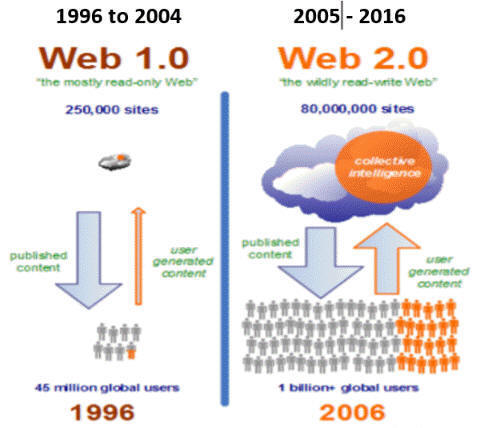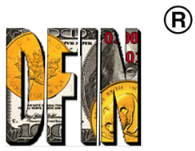Digital Financial
Information Network
The Executive Desktop
Reference Center |
DFIN Glossary
FinTech,Web 3.0,
DeFi
The Metaverse and Global Warming
|
This DFIN Glossary is to be used for informational purposes only and intended to assist the public in understanding some of the specialized words and phrases in FinTech. This Glossary is not all inclusive,. DFIN Assumes no responsibility for errors and omissions. |
Web 1.0 : This website is built in an
information-based web 1.0 style.
Web 2.0 :
Web 3.0 elements have been around since the turn of the Century but are gaining steam at this time. This is not a new web only new technology. The end game is to remove intermediaries .
https://nkn.org/community/blog/web-3-0-examples/
| Web 1.0 and 2.0 Is Centralized |


| | Web 3.0 is Decentralized |
|
Advantages of Web 3.0 |
| Efficiency in Search Results |
Better Access to Information |
End user has complete control of data through
encryption | Intermediaries like Apple, Google and governments no longer control data services or sites |
| Digital Assets can be moved quickly |
Sharing information will be easier |
| No interruption of service since all data is stored in all nodes |
Harder to adopt a fake identity online |
| Easier to work on the Internet because it can be personalized |
Multiple backups will eliminates disruption of dataflow |
|
| |
|
Disadvantages of Web 3.0 |
| Only advanced devises can handle 3.0. This will lockout many people |
Complicated for newcomers to grasp the concept |
| Privacy policies and controls are more important than ever |
It will be easier to find people personal and private information. Less anonymous than 1.0 and 2.0 |
| Web 1.0 will seem obsolete and less appealing to users |
People will spend too much time on the Internet |
|
Web 3.0 is upon us: As a natural progression from Web 2.0, Web
3.0 is a cycle that has taken all the gains made by its
predecessor with regard to interacting with the internet and scaled them
up resulting in a more connected, intelligent and open web. Web 3.0 is
set to bring a transformation where the user moves from the siloed
approach to a seamless one. https://nkn.org/community/blog/web-3-0-examples/
|
Semantic Web : A key element of Web 3.0 From the WW3 Consortium = W3C is helping to build a technology stack to support a “Web of data,” the sort of data you find in databases. The ultimate goal of the Web of data is to enable computers to do more useful work and to develop systems that can support
trusted interactions over the network. The term “Semantic Web” refers to W3C’s vision of the Web of linked data. Semantic Web technologies enable people to create data stores on the Web, build vocabularies, and write rules for handling data. Linked data are empowered by technologies such as RDF, SPARQL, OWL, and SKOS. https://www.w3.org/standards/semanticweb/
|
|
What is a Digitlord?: Think
Landlord for digital real estate. A Digitlord buys, leases, or sells
digital real estate. I am a Digitlord. I buy domains, and recently began
the process to lease and sell domains. See
http://dfin.com/leasing.htm
I saw the opportunity
in the late 90s when I began using the term Digitlord to define a person
that leases and sells digital real estate (domains). I purchased the
domain name, Digitlord. Com and executed a
Digitlord Website lease in 2007.
I envision Digitlords to eventually be the owner or intermediary for all
digital assets.
Commercial real
estate brokers seem blind to the opportunity. The digital economy will
eventually redefine the real estate industry.
Sample Digitlord Agreement:
https://www.sec.gov/Archives/edgar/data/1299709/000119312507071839/dex101.htm
|
|



